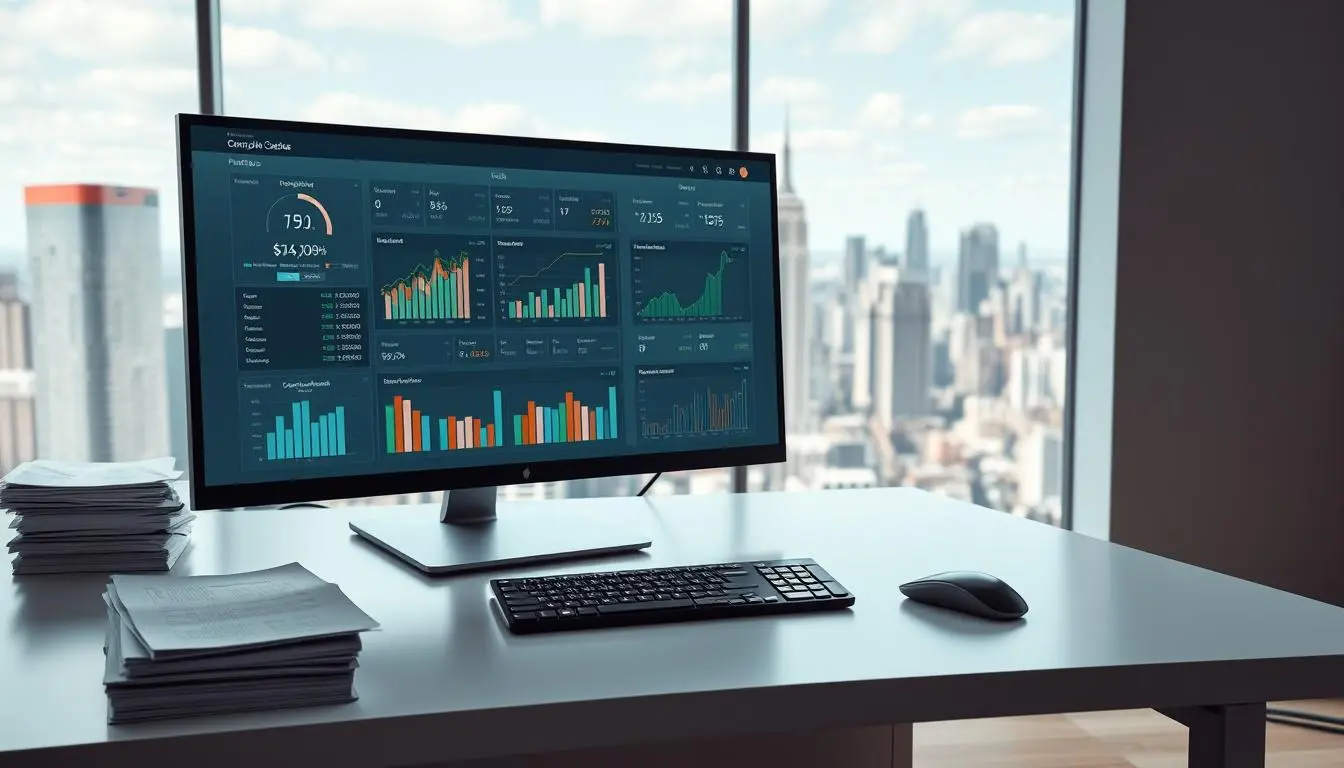Best Treasury Management Software for Banking and Finance Teams
Managing cash, liquidity, and financial risk is at the heart of every banking and finance team’s daily work. Yet, as financial operations become more complex and real-time visibility becomes a necessity, traditional spreadsheets and manual methods just can’t keep up. This is where treasury management software (TMS) steps in.

Modern treasury management solutions automate key financial processes, ensure compliance, and give teams greater control over their liquidity and investments. In this detailed guide, we’ll explore what treasury management software is, why it’s crucial for banking and finance teams, and which tools stand out as the best in 2025. We’ll also discuss how to select the right solution for your organization and how automation platforms like Kosh.ai are reshaping the future of treasury management.
What is Treasury Management Software?
Treasury Management Software is a digital platform designed to help finance professionals manage their company’s financial assets, cash flow, investments, and risks efficiently. It centralizes all treasury-related data into one place, providing real-time insights into liquidity positions, forecasts, and funding needs.
For banks and finance teams, a TMS helps automate daily treasury operations such as:
- Cash positioning and forecasting
- Liquidity management
- Investment tracking
- Bank account management
- Risk and compliance reporting
- Payment processing and reconciliation
Instead of juggling multiple spreadsheets, banking professionals can use a TMS to see all cash flows, investments, and financial risks on one dashboard. This makes decision-making faster, smarter, and more data-driven.
Why Banking and Finance Teams Need Treasury Management Software
Banking and finance teams handle vast amounts of money daily, and small errors can lead to massive losses or regulatory breaches. A treasury management solution is no longer a luxury; it’s a necessity.
Here’s why it’s crucial:
1. Real-Time Cash Visibility
A modern TMS provides real-time visibility into all cash positions across different accounts, currencies, and subsidiaries. This helps teams make informed decisions about investments, funding, and liquidity management.
2. Automation of Routine Processes
Manual cash flow tracking or payment reconciliation is time-consuming and error-prone. Treasury software automates these tasks, saving time and reducing operational risk.
3. Enhanced Risk Management
Banking and finance teams face multiple risks, including market, credit, and operational risks. A TMS helps track exposures, forecast outcomes, and build strategies to minimize them.
4. Regulatory Compliance and Audit Readiness
With built-in compliance checks and detailed audit trails, treasury software ensures that every transaction is traceable and meets regulatory requirements.
5. Better Forecasting and Liquidity Planning
The best TMS solutions offer predictive analytics that help teams anticipate cash needs, optimize borrowing, and manage investments efficiently.
6. Seamless Integration with Other Financial Systems
Most modern TMS platforms integrate smoothly with ERP systems, accounting tools, and banking portals. This creates an interconnected financial ecosystem where data flows freely and accurately.
Key Features to Look for in a Treasury Management Software
Before we dive into the top tools, let’s look at the must-have features that define a great treasury management solution.
- Cash and Liquidity Management – Monitor cash flows, forecast future needs, and optimize liquidity positions.
- Automated Reconciliation – Match transactions automatically to eliminate manual errors.
- Payment Management – Centralize payments and ensure they are processed securely and efficiently.
- Risk Management Tools – Identify, measure, and mitigate exposure to interest rate, credit, and currency risks.
- Compliance and Reporting – Generate real-time regulatory and management reports effortlessly.
- Multi-Entity and Multi-Currency Support – Manage complex treasury structures across countries and currencies.
- Integrations and APIs – Connect seamlessly with ERP, bank accounts, and accounting software.
- User-Friendly Interface – Ensure ease of use so treasury teams can adapt quickly.
Best Treasury Management Software for Banking and Finance Teams in 2025
Here’s a look at some of the top-performing treasury management software solutions that are transforming the banking and finance landscape.
1. Kosh.ai
Best for: Automated reconciliation and real-time cash insights
Overview:
Kosh.ai is a next-generation treasury and reconciliation automation platform designed to simplify financial operations. It automates reconciliation in under 60 seconds by connecting with bank statements, ERP systems, and payment gateways.
Key Features:
- Automated multi-source reconciliation
- Real-time liquidity analytics
- Cash flow forecasting and reporting
- Strong data security and compliance framework
- Seamless integrations with major financial platforms
Why Banking Teams Love It:
Kosh.ai offers deep automation capabilities, removing the manual burden from treasury teams. It also provides granular visibility into cash positions and transaction patterns, which helps improve financial accuracy and reduce reconciliation time drastically.
2. Kyriba
Best for: Large enterprises with global treasury operations
Overview:
Kyriba is a cloud-based TMS widely used by global banks and financial institutions. It offers powerful tools for cash management, payments, and risk management.
Key Features:
- Real-time cash visibility across all subsidiaries
- Centralized payment hub
- FX risk management and hedging tools
- Advanced analytics and reporting
- Integration with ERP and accounting systems
Why It Stands Out:
Kyriba provides enterprise-grade features, making it ideal for global treasury teams that manage multiple banks and currencies.
3. FIS Treasury and Risk Manager
Best for: Comprehensive treasury and risk management
Overview:
FIS is one of the most trusted names in financial technology. Its Treasury and Risk Manager helps organizations automate key treasury functions, manage exposures, and optimize liquidity.
Key Features:
- Liquidity and cash forecasting
- Payment automation
- Market and credit risk analytics
- Treasury accounting
- Strong compliance and reporting tools
Why Finance Teams Use It:
FIS offers a mature and scalable system that’s perfect for banks with complex financial structures and large transaction volumes.
4. GTreasury
Best for: Mid to large-scale finance teams looking for flexibility
Overview:
GTreasury provides an integrated platform for cash management, payments, and risk analytics. It’s known for its modular design, allowing teams to pick only what they need.
Key Features:
- Cash and liquidity management
- Bank connectivity and payment management
- Hedge accounting and risk analytics
- Cloud-native architecture for scalability
- Multi-currency support
Why It’s Popular:
GTreasury offers flexibility and an intuitive user interface, which makes it easier for treasury teams to adapt and customize according to their operational needs.
5. ION Treasury
Best for: Large banking and corporate finance departments
Overview:
ION Treasury combines a suite of products tailored for complex treasury needs. It provides comprehensive automation for liquidity, payments, and financial risk management.
Key Features:
- End-to-end treasury management
- Multi-entity consolidation
- Advanced analytics and dashboards
- FX exposure management
- Customizable workflows
Why Teams Choose It:
ION Treasury is highly configurable and ideal for institutions that need a robust and scalable treasury management framework.
6. SAP Treasury and Risk Management
Best for: Businesses already using SAP ERP systems
Overview:
SAP Treasury and Risk Management integrates tightly with other SAP modules, creating a unified financial ecosystem. It supports cash operations, liquidity forecasting, and investment tracking.
Key Features:
- Comprehensive cash management tools
- Risk analytics and compliance features
- Centralized payments and reconciliations
- Integration with SAP S/4HANA
Why It’s Valuable:
SAP’s native integration ensures smooth data flow between treasury and accounting functions, minimizing duplication and improving decision-making.
Also Read: Treasury Management System: Everything You Need to Know
How to Choose the Right Treasury Management Software
Choosing the right TMS depends on the size of your organization, your treasury goals, and the level of automation you need. Here’s what to consider:
1. Scalability
Ensure the system can handle your current volume and scale as your business grows.
2. Integration Capability
Choose a platform that integrates easily with your existing ERP, banking, and accounting systems.
3. Automation Depth
Opt for software that automates repetitive tasks like reconciliation, cash forecasting, and reporting.
4. Ease of Use
A user-friendly interface ensures that finance teams can use the software effectively without long training sessions.
5. Security and Compliance
Banking and financial data are sensitive. Make sure the platform follows strong data protection standards and provides full audit trails.
6. Cost and ROI
Evaluate the total cost of ownership and the time saved through automation. The right system should provide measurable ROI within months.
Also Read: Treasury Management Solution: Unlocking Financial Transformation
The Future of Treasury Management Software
The future of treasury management lies in AI-driven automation and predictive analytics. Intelligent systems like Kosh.ai are paving the way for self-learning treasury operations that can analyze trends, predict cash shortages, and flag anomalies before they cause problems.
Key trends shaping the future include:
- AI and Machine Learning: Automating forecasting, anomaly detection, and reconciliation.
- APIs and Open Banking: Seamless data flow between banks, ERPs, and treasury systems.
- Cloud and SaaS Deployment: Enabling flexibility, security, and real-time access.
- Real-Time Data Analytics: Helping CFOs make data-backed strategic decisions.
- Embedded Finance: Integrating treasury functions directly into operational workflows.
As banks and finance teams continue to evolve, embracing these technologies will be critical for maintaining efficiency and competitiveness.
Why Kosh.ai is Leading the Way in Treasury Automation
Kosh.ai combines treasury management and reconciliation automation into a single platform. It helps finance teams close books faster, get real-time visibility into cash positions, and ensure every transaction is accurately matched.
Key advantages of Kosh.ai include:
- Fast reconciliation that saves hours of manual work
- Real-time analytics for cash flow and liquidity insights
- Seamless integrations with banking and ERP systems
- Enterprise-grade security and compliance controls
- AI-driven automation for faster, smarter decision-making
For banking and finance teams aiming to optimize liquidity management and financial control, Kosh.ai offers the perfect blend of automation, intelligence, and accuracy.
Also Read: Integrated Treasury Management System with AI-Powered Insights
FAQs
1. What is the main purpose of treasury management software?
Treasury management software helps organizations manage cash, liquidity, and risk efficiently. It centralizes financial operations and automates routine treasury tasks.
2. How does treasury management software help banks?
It improves cash visibility, automates payments, ensures compliance, and reduces operational risks through real-time analytics and process automation.
3. What are the benefits of using automation in treasury management?
Automation reduces manual errors, speeds up reconciliation, improves liquidity forecasting, and enhances decision-making accuracy.
4. Can treasury software integrate with ERP and banking systems?
Yes, most modern treasury management systems integrate seamlessly with ERPs, accounting tools, and bank portals to ensure data accuracy.
5. How is AI transforming treasury operations?
AI enhances forecasting, automates reconciliations, detects anomalies, and provides predictive insights for better liquidity planning.
6. Which is the best treasury management software for small to mid-sized finance teams?
For smaller finance teams, Kosh.ai is ideal because it offers robust automation, fast reconciliation, and easy integration without complex setup or high costs.
Contact us now









